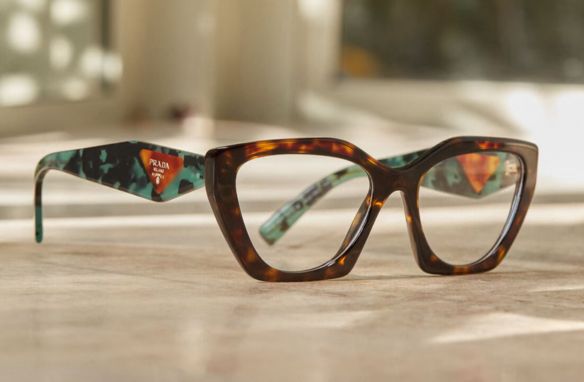Introduction
- Brief overview of the importance of finding the right prescription glasses for vision correction and comfort.
- Mention how the right pair can enhance both functionality and style.
Understanding Your Prescription

- Overview: Explain the components of a typical eyeglass prescription.
1.1. Key Terms
- Sphere (SPH): Indicates the lens power needed for nearsightedness or farsightedness.
- Cylinder (CYL): Measures astigmatism and indicates the lens power needed for correction.
- Axis: Represents the orientation of astigmatism.
- Add: Indicates the additional magnifying power needed for bifocals or progressive lenses.
1.2. Importance of Regular Eye Exams
- Discuss the need for regular check-ups to ensure prescriptions are up to date.
Choosing the Right Frame Style

- Overview: Guide readers in selecting a frame style that suits their face shape and personal style.
2.1. Identifying Your Face Shape
- Key Shapes: Round, oval, square, heart, and diamond.
- Frame Recommendations:
- Round faces: Rectangular frames for contrast.
- Square faces: Round or oval frames to soften features.
- Heart-shaped faces: Wider frames to balance the forehead.
2.2. Considering Personal Style
- Tips: Choose frames that reflect individual personality and lifestyle (e.g., classic, trendy, sporty).
Selecting the Right Frame Material

- Overview: Discuss various frame materials and their benefits.
3.1. Plastic Frames
- Pros: Lightweight, colorful, and often more affordable.
- Cons: May not be as durable as metal options.
3.2. Metal Frames
- Pros: Sturdy and adjustable, often offering a sleek look.
- Cons: Can be heavier and may cause irritation for sensitive skin.
3.3. Hybrid and Specialty Materials
- Pros: Some frames combine materials for enhanced comfort and style (e.g., rubberized or flexible frames).
Choosing the Right Lenses

- Overview: Discuss lens options and coatings to improve comfort and functionality.
4.1. Lens Types
- Single Vision: Corrects one field of vision (near or distance).
- Bifocal: Contains two different lens powers for near and distance vision.
- Progressive: Offers a gradient of multiple lens powers without visible lines.
4.2. Lens Materials
- Polycarbonate: Lightweight and impact-resistant, ideal for active lifestyles.
- High-Index: Thinner and lighter than traditional lenses, great for strong prescriptions.
4.3. Lens Coatings
- Anti-Reflective: Reduces glare from screens and bright lights.
- Scratch-Resistant: Protects against everyday wear and tear.
- UV Protection: Essential for outdoor wear to shield against harmful rays.
Ensuring a Proper Fit

- Overview: Explain the importance of fit for comfort and functionality.
5.1. Measuring for Fit
- Key Measurements: Frame width, bridge width, temple length, and lens height.
- Tips: Seek assistance from an optician to ensure accurate measurements.
5.2. Trying on Frames
- Tips: Always try on frames to check comfort, balance, and style.
- Considerations: Look for frames that sit comfortably on the nose and don’t slide down.
Finalizing Your Purchase

- Overview: Guide readers on how to complete their order.
6.1. Purchasing Options
- In-Store vs. Online: Discuss the pros and cons of each option.
- Insurance Considerations: Check coverage for prescription glasses.
6.2. Adjustments After Purchase
- Tips: Visit an optician for any adjustments needed for a perfect fit after purchasing.
Conclusion
- Recap the steps involved in finding the perfect prescription glasses.
- Encourage readers to take their time in the selection process to ensure comfort and style.


